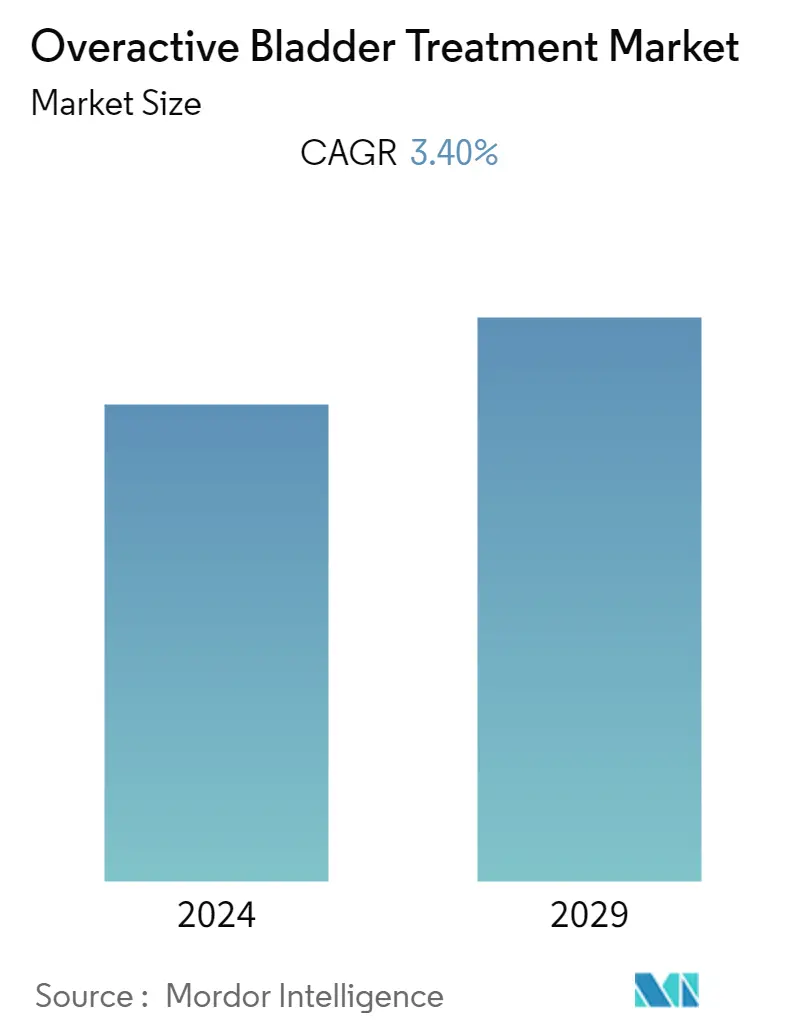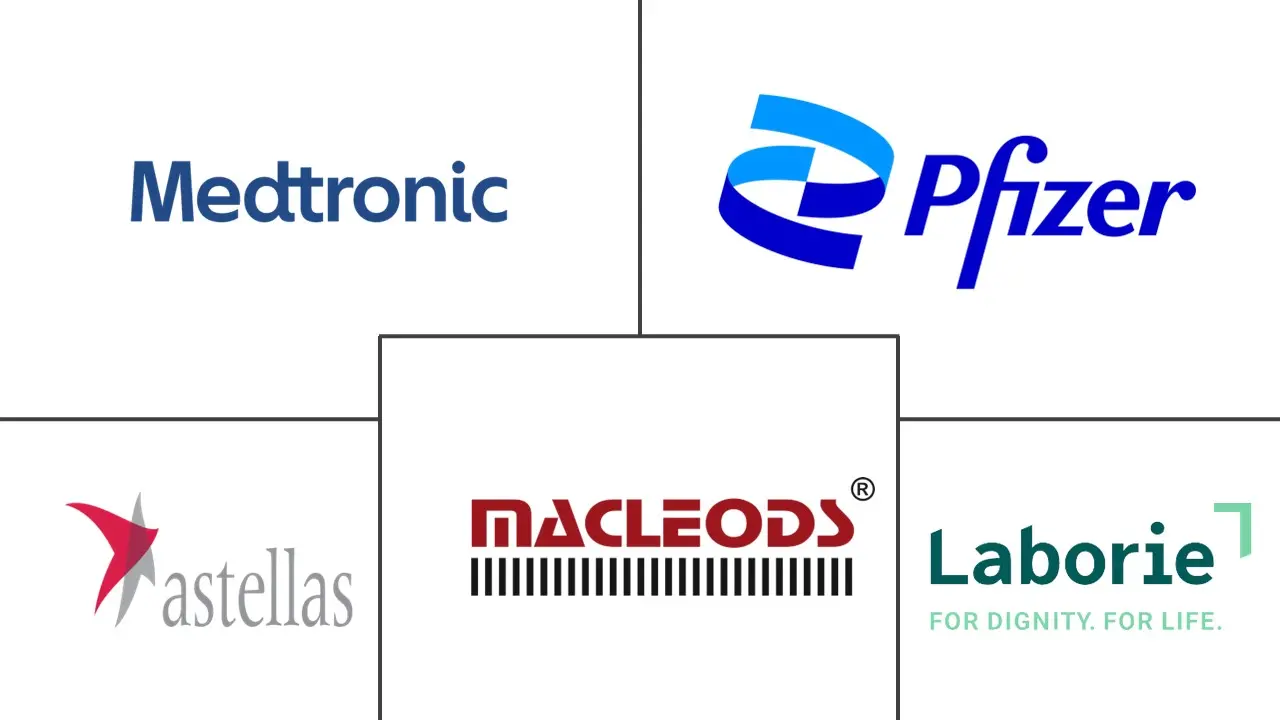Market Size of Overactive Bladder Treatment Industry

| Study Period | 2019 - 2029 |
| Base Year For Estimation | 2023 |
| CAGR | 3.40 % |
| Fastest Growing Market | Asia Pacific |
| Largest Market | North America |
| Market Concentration | Medium |
Major Players
*Disclaimer: Major Players sorted in no particular order |
Need a report that reflects how COVID-19 has impacted this market and its growth?
Overactive Bladder Treatment (OAB) Market Analysis
The overactive bladder (OAB) treatment market is expected to register a CAGR of 3.4% over the forecast period.
COVID-19 pandemic significantly impacted the overactive bladder treatment market growth due to the high risk of overactive bladder symptoms in the COVID-19 recovered patients. For instance, as per the study published by Springer Journal in November 2021, patients were reported with worsening overactive bladder symptoms 10-14 weeks after hospitalisation with COVID-19. Similarly, according to an article published by the Elsevier Journal in October 2022, individuals with positive COVID-19 cases were at higher risk of worsening overactive bladder (OAB) symptoms. Therefore, the COVID-19 infection rate associated with overactive bladder symptoms increased the demand for overactive bladder treatments amid the pandemic. However, with the reduction of COVID-19 cases, the need for OAB drugs for COVID-19 patients is expected to show stable growth during the forecast period.
The primary factor driving the market growth include the rising prevalence of various diseases that causes overactive bladder, such as urinary tract infections (UTI), diabetes, bladder cancer, and neurological disorders like Parkinson's disease and stroke. UTIs occur when bacteria enter the urinary tract and cause infection. In addition to pain and burning during urination, UTIs lead to overactive bladder symptoms, including frequent urination and urgency. For instance, according to an article published by the StatPearls Journal in November 2022, approximately 40% of women in the United States are estimated to develop a urinary UTI once in their lifetime. Therefore, the high prevalence of UTI will drive the demand for OAB treatment drugs during the forecast period. In addition, diabetes, particularly uncontrolled diabetes, can affect the nerves that control the bladder, leading to overactive symptoms. High blood sugar levels can damage the nerves over time, causing issues with bladder control. Hence, the increasing prevalence of diabetes may also lead to an increase in the OAB burden. For instance, according to the December 2021 report of the IDF Diabetes Atlas, approximately 537 million adults were living with diabetes worldwide in 2021, and the number was projected to increase to 643 million by 2030 and 783 million by 2045. Thus, owing to the high prevalence of risk factors, the burden of OAB is expected to increase, thereby driving the demand for OAB therapeutics.
Moreover, the increasing number of ongoing clinical trials and novel drug approvals is also projected to augment market growth. The surge in clinical trials is projected to drive market growth by introducing novel OAB treatment drugs. For instance, in May 2022, Urovant Sciences presented data from the Phase 3 EMPOWUR Extension Study of GEMTESA(vibegron) 75 mg overactive bladder treatment drug therapy. It will further confirm this drug's potential utility and durability in this patient population and examine the long-term effects of the product. The drug showed sustained reductions in average daily micturition, urge urinary incontinence (UUI) episodes and urgency episodes. Hence, as more drugs complete clinical trials and receive regulatory approvals, the market will witness a surge in innovative therapies, enhancing patient outcomes and fostering market growth.
Thus, owing to the rising prevalence of various disorders like UTI and diabetes and the surging number of ongoing clinical trials of OAB treatment drugs, the market is expected to project growth over the forecast period. However, alternative treatment options such as physical therapies and surgeries may impede the market growth during the study period.
